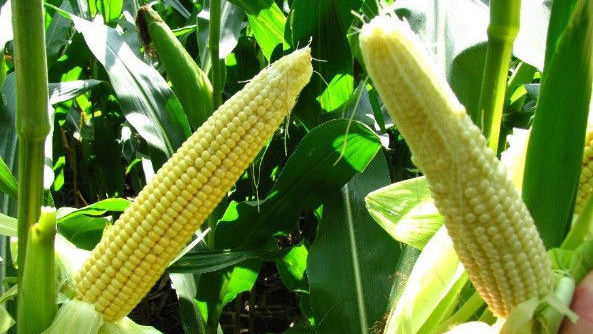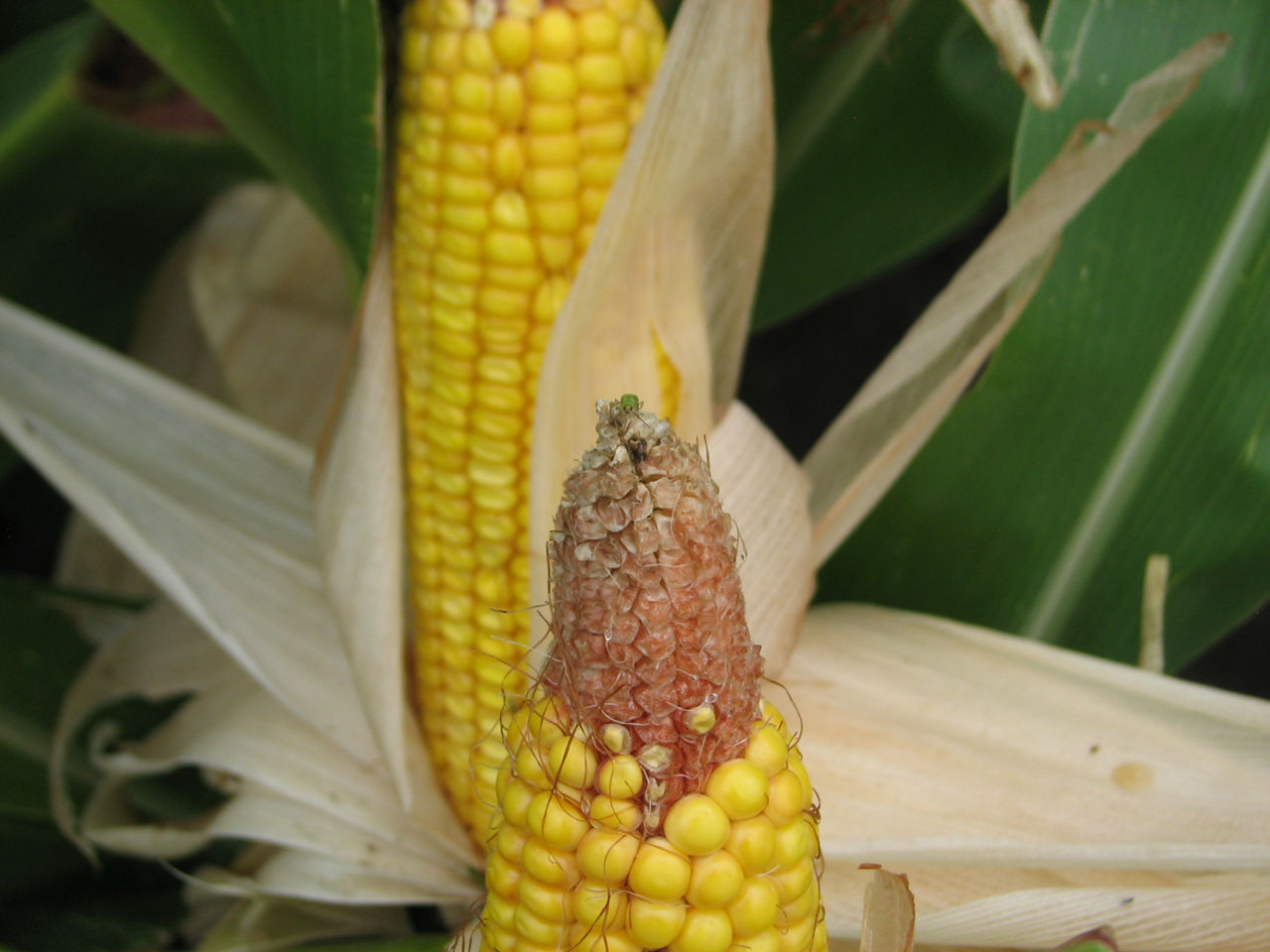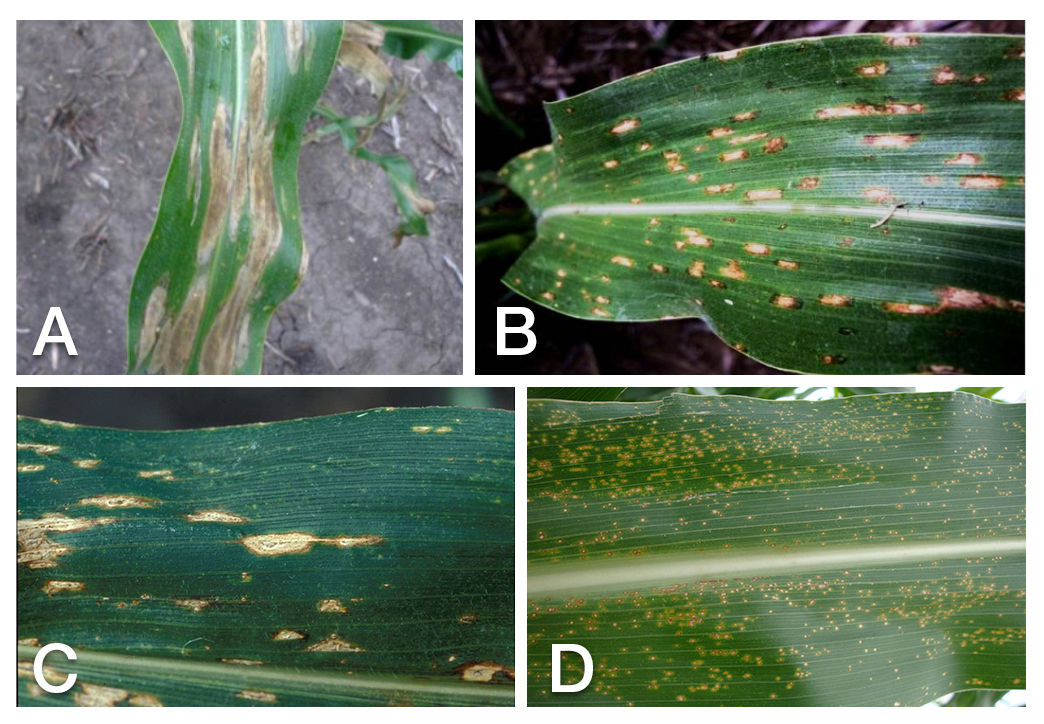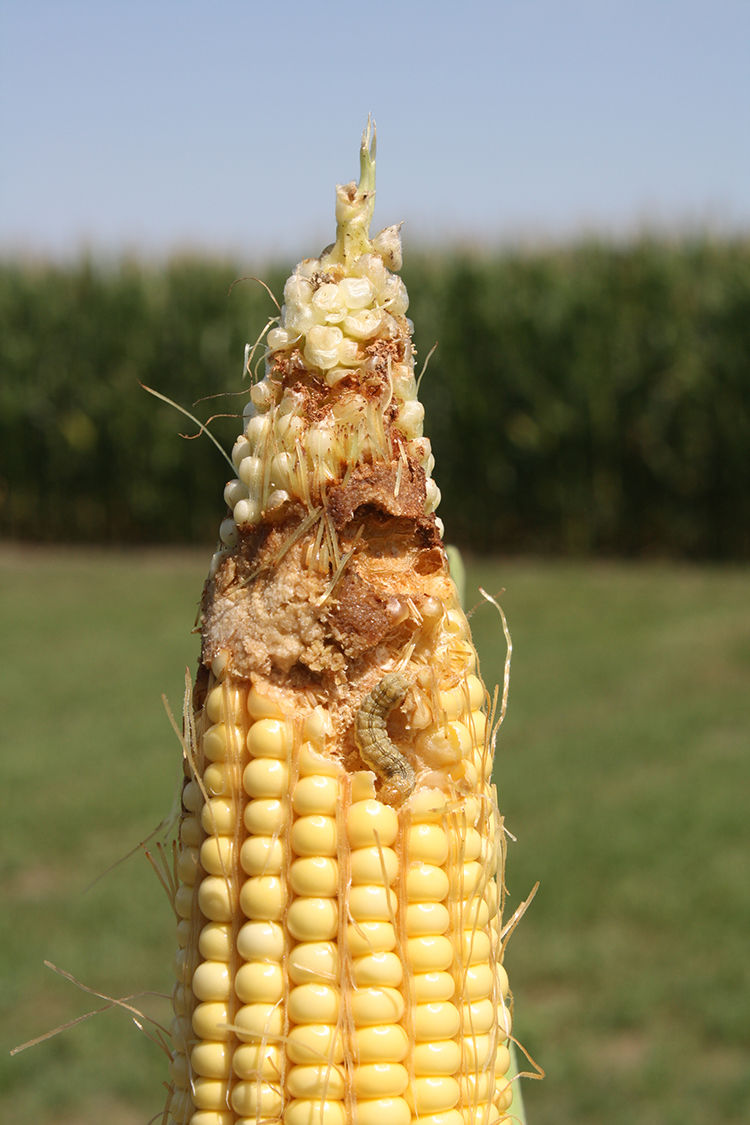10 MIN READ
Maximizing Corn Yield Potential
June 3, 2025
- Selecting the right corn product for the field and planting it at the appropriate time and seeding rate in ideal conditions is the first step in optimizing yield potential by establishing a uniform and vigorous corn stand.
- Stress at critical corn growth stages (vegetative, pollination and grain fill) should be managed, if possible, to maintain photosynthesis and yield potential.
- Nutrient management and disease control can help reduce plant stress during critical growth stages.
Yield potential is defined as the maximum production of a crop that can be achieved in a given environment. In most cases, the yield potential is theoretical as the crop must receive optimum levels of water and nutrients and be completely protected against all stresses that may reduce growth and impact yield. While weather is often the most overriding factor in determining how close to the yield potential a crop can get, there are several management decisions farmers can make to help ensure that the crop is placed in the best circumstances to achieve the yield potential.
Components of Yield1
The number of ears per acre, kernel rows per ear, kernels per row, and kernel weight are the components of yield. The interaction between these factors and the weather conditions, soil type, pest pressure, and available nutrients at specific times in the growing season can determine how close the yield of a particular field will be to the yield potential of the field.
- Ears per acre. The number of ears per acre is determined by the seeding rate, the soil type, and environmental conditions at planting and germination. Factors during the growing season that can reduce the number of harvestable ears include hail, insect injury, greensnap, and stalk lodging.
- Kernel rows per ear. The number of kernel rows is determined by the 6th leaf stage (V6). Corn product genetics is a key determining factor for the number of potential kernel rows. However, plant stresses, such as drought, can reduce the final number of kernel rows.
- Kernels per row. The number of kernels within a row are determined approximately at V6 but not finalized until tasseling (VT). The final number of ovules is set about one week before the silks emerge. Plant stress at this time such as drought, nutrient deficiency, and leaf disease can reduce the number of ovules that develop. The number of ovules that are fertilized and retained determines the number of kernels. Kernel abortion can occur as late as the milk stage (R3) if resources are not sufficient.
- Kernel weight. Kernel weight is largely determined between the blister (R2) and dent (R5) stages. If the plant is subjected to stress before it reaches physiological maturity (R6), starch accumulation in the kernels is reduced, so the kernel weight will be lower.


Managing the Crop for Yield
Field Preparation2
Fields with poorly drained soil can result in later planting, planting under less-than-ideal conditions and poor corn stands. Improving drainage can lower the risk of wet soils, soil compaction, and loss of soil nitrate via denitrification that can result in poor stands of corn.
Avoiding soil compaction can help reduce the risk of a poor quality stand, from the beginning of the season through full maturity. The field should not be worked if the soil is too wet and trips across the field should be minimized. Reduced tillage systems can reduce the number of trips across the field, but these systems can also result in soil compaction.
In fields with rolling topography and good drainage, soil moisture can be difficult to retain potentially leading to plant stress. Tillage systems and cover crops can help increase water retention under these situations.
Crop residue, particularly in continuous corn systems, should be managed. In no-till or reduced tillage fields, row cleaners and trash sweeps on the planter can provide a clean soil surface over the seed furrow to help ensure even germination and seeding growth.
Corn Product Selection2
Extensive work over multiple years is completed to characterize corn products. Local Technical Agronomists will have a good understanding of performance for your area, including plant density recommendations. This information, coupled with an understanding of current product performance in Land-Grant University trials, can help with selecting a corn product that has demonstrated strong yield potential over a wide range of conditions. Land-Grant University trials are a good source of information about corn product performance across several locations with differing environmental conditions and soil types. Examining the yield data from corn product trials in your own geography can be helpful, but they may not contain a wide range of products from different companies. Dr. Robert Nielsen of Purdue University recommends selecting corn products that consistently yield no less than 90% of the highest yield in the trial, no matter where they are grown. As an example, if the top yield in a trial is 200 bu/acre, then consider only corn products that yield (200 x 0.90) 180 bushels per acre or more. After the products have been determined based on yield potential, then consider other traits, such as drought and disease tolerance and insect resistance packages.
For more information about corn product performance, please consult your seed provider for more information about specific products.
Cropping System2
There is a tremendous amount of data that supports crop rotation as a method to increase yield potential in the subsequent corn crop. While many producers use a continuous corn production system, the addition of a single crop, usually soybean, in a one year rotation can result in higher yield potential. In continuous corn production systems, residue management is one key to maximizing the yield potential of the field. Corn residue can reduce soil temperatures in the spring resulting in uneven emergence, herbicide interception, and serve as an overwintering site for corn diseases.
Fertility2,3
Maintaining adequate soil fertility and soil pH can reduce the risk of environmental stress that lowers yield potential.
- Starter fertilizer. Starter fertilizers commonly contain nitrogen (N), phosphorus (P), and potassium (K), and depending on need, sulfur (S). Starter fertilizer can help increase early plant growth, particularly when planting in cooler soils usually associated with early planting and reduced tillage systems with high residue loads. However, the use of starter fertilizer and an increase in yield has been inconsistent in the Corn Belt. Iowa State University suggests including a starter fertilizer to help maintain yield potential when: 1.) planting occurs earlier than normal into cooler soils (mainly N and P); 2.) planting into reduced tillage systems with high residue cover (mainly N and P); 3.) planting is delayed (mainly P); 4.) planting into a continuous corn production system, especially in reduced tillage systems (mainly P and K); and 5.) nutrients are not applied at adequate rates before planting (all three).
- Nitrogen. Ensuring adequate available N during peak uptake is critical for reaching the yield potential. Using practices that focus on efficient application of N can be used to help preserve N for use by the plant. Avoid fall applications without the use of an N inhibitor and apply at soil temperatures at or below 50 °F, avoid broadcast urea-based N sources without incorporation or the use of urease inhibitor, and use side application methods that are more in line with plant use.
Disease Management
Seedling diseases can reduce the stand, reducing the number of plants that produce ears. Foliar diseases can reduce photosynthetic capacity, lowering the number of kernels per ear and may result in stalk diseases lowering the number of harvestable ears. High quality seed treatments can help alleviate seedling diseases. Many corn products are tolerant to common foliar diseases, such as Northern corn leaf blight, grey leaf spot, and eyespot. Fungicides may be necessary to reduce the incidence of foliar fungal diseases. This is particularly true when the disease attacks a more susceptible corn product during the vegetative stage and the environmental conditions are conducive to further disease development. Please consult Managing Corn Diseases for more information on disease management.

Insect Management
Like corn seedling diseases, seedling insect pests can reduce stands and limit the number of plants that produce ears. Insect feeding on growing plants can reduce yield potential by limiting nutrient uptake from the roots (corn rootworm larvae), movement of resources in the stalk (European corn borer), reduce the number of kernels per ear by limiting pollination (Japanese beetles, corn rootworm adults), and reduce the number of kernels after pollination (corn earworm, fall armyworm, western bean cutworm). Feeding on leaf tissue can reduce photosynthetic capacity and lower yield potential. Insect feeding on the ear can also impact grain quality.

Weed Management
Weeds consistently limit yield potential. Timely management and prevention of infestations are key to maximizing yield potential. Developing a weed management plan for each field that can incorporate cultural, mechanical, and chemical methods of control is the first step in managing weeds. Please consult your chemical provider for tips on managing weeds in corn.
Summary
Identifying and managing yield limiting factors can help maximize corn yield potential on your farm. Challenges to maximizing yield potential occur almost every growing season, but good planning can help limit the impact of those challenges.
Sources:
1 Licht, M. 2017. Estimating corn yields using yield components. Iowa State University Extension. https://crops.extension.iastate.edu/cropnews/2017/08/estimating-corn-yields-using-yield-components.
2 Nielsen, R. 2012. Corn Management for Extreme Conditions. Purdue University Extension. https://www.agry.purdue.edu/ext/corn/news/timeless/ExtremeCornMgmt.html.
3 Mallarino, A. 2015. Starter fertilization sometimes boosts corn yield. Iowa State University Extension. https://crops.extension.iastate.edu/cropnews/2015/03/starter-fertilization-sometimes-boosts-corn-yield.
1211_70519